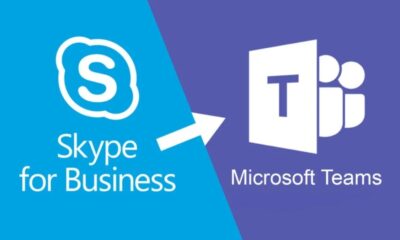Business
A Cost of Living Crisis? Here Are Six Suggestions To Help You Manage Your Money

While the trend of inflation may have stopped rising, cost of living concerns continue to plague Australians; according to Lifeline, more people are contacting to discuss financial difficulties.
According to the NAB Australian Wellbeing Survey, living expenses, health conditions, and individual financial concerns are currently the main sources of stress. This is because average household savings have decreased from 20% in 2020 to 3.75% in 2023.
Seventy percent of mortgage holders are experiencing mortgage stress, according to the same report.
The general guideline for managing cash flow in a personal home when inflation is not a concern is 50/30/20, which allocates 50% of income to non-discretionary costs, 30% to discretionary spending, and 20% to savings.
These days, a more realistic figure for many Australian homes is 70/25/5 because the cost of living has climbed so much due to rising loan rates, higher rental expenses, and price increases for necessities.
Aiming to save a minimum of five percent can help you have some money at the conclusion of these difficult economic times, as well as a safety net in case something goes wrong.
You are in financial stress if you find it difficult to fulfill your present expenses and saving is not an option. This might be emotionally taxing, but there are several ways to get expert assistance, such as calling Lifeline or using their financial stress support toolbox.
Following necessary expenses, consider these six helpful cash flow management techniques to control home expenses and still have money left over for savings:
Make A Budget And Follow It
This will assist you in monitoring your spending and ensuring that you are not going over budget, making it one of the best strategies to tackle the growing cost of living. Be sure to account for all of your costs, such as lodging, food, medical care, travel, and entertainment.
Establish A Bucket Plan
Debit cards and phone tapping are convenient these days, but there’s a chance you’ll overspend. You’ll have a lot better understanding of how much money you need for bills and particular goals and how much is available for discretionary spending if you set up “bucket accounts” for different requirements or ambitions.
You cannot spend what you are unable to obtain. Keep a single “bucket” connected to your debit card or digital wallet for daily spending. For specialized purposes like paying monthly or quarterly payments or putting money aside for a vacation, make a second or third “bucket.”
If you have money that you won’t need right away, think about opening a bank account with a higher interest rate or one that is more difficult to access. Longer term, think about investing the money wisely and consult an expert to see what is best for your situation.
Make It Clear What Expenses are Necessary and What Are Optional
The costs of “must haves” (such as food, utilities, insurance, medical care, and fuel) and “nice to haves” differ significantly.
Watch out for the creep of discretionary spending; you may manage it by reducing the amount of time you spend eating out, examining the content and digital subscriptions you have, and, if possible, opting out of additional direct debits. Small costs accumulate over time. All you have to do is figure out how much it would cost you to get coffee delivered each month.
Examine Your Policies For Insurance
Speak with a professional or conduct internet research to examine your insurance coverage and rates, eliminating items you don’t need, rather than canceling and becoming uninsured in the event of an emergency.
Avoid Slipping Into The Credit Trap
Interest rates on credit cards are usually extremely high. Repay the entire amount each month, or as much as you can; if you only pay the minimal amount due each month, it may take years to make up the entire amount owed.
Invest For The Long Term To Save Money
If your cash flow is severely limited, this might not always be feasible, but whenever you can, establish a savings strategy for longer-term investments. Investments like managed funds or a share portfolio allow you to “lock away” money and make it harder to access in an emergency. However, you can still access them.
It’s crucial to get financial guidance on what investments can be suitable for your needs and match it with your investment objectives and time horizon.
Just be sure that the advice you’re getting is reliable, considering ASIC’s efforts to shield the public from “influencers,” market manipulation, and unlicensed investment advice.
You may contribute to preserving your financial stability and, ideally, prospering in the face of growing costs by making a budget, cutting back on discretionary spending, eliminating wasteful spending, and saving and investing for the future.
-

 Business2 weeks ago
Business2 weeks agoNayef Doleh Examines International Humanitarian Fundraising Strategies
-

 Business3 weeks ago
Business3 weeks agoHow Black Banx is Redefining Global Banking Strategies in 2025
-

 Business2 weeks ago
Business2 weeks agoHow to fill MSME Form 1? Step-by-Step Guide
-

 Tech4 weeks ago
Tech4 weeks agoHow to Switch Between Microsoft Teams and Skype, How To Export Messages, Files, and Contacts from Skype Before It Shutting Down
-

 Tech3 weeks ago
Tech3 weeks agoMicrosoft Teams to End SMS Messaging Feature Support for Android Phones and Switch to Phone Link App as Alternative
-

 Business4 weeks ago
Business4 weeks agoPurpose of the AIRdiamond Project
-

 Education3 weeks ago
Education3 weeks agoSchool Of Odd Thinkers – Think Odd, Learn a lot, and Earn a lot
-

 Education3 weeks ago
Education3 weeks agoThe Power of Differentiated Instruction: Patrick Granfar Discusses Its Impact on Student Learning























